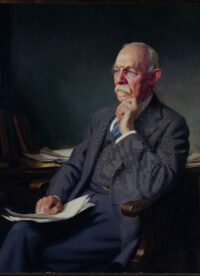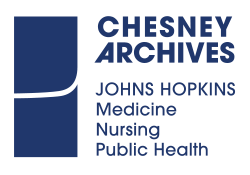William Stewart Halsted Collection

William Stewart Halsted
By Thomas C. Corner
Collection Overview
Creator: William Stewart Halsted (1852 - 1922)
Collection Date: 1890 - 1922
Extent: 39 linear feet
Biography
William Stewart Halsted was born in New York City. He received his A.B. in 1874 from Yale University and his M.D. in 1877 from the Columbia University College of Physicians and Surgeons. Halsted served as an intern at Bellevue Hospital (1876-1877) and as a house physician at New York Hospital (1877-1878). He then went to Europe to study in Vienna, Leipzig, and Würzburg (1878-1880). Returning to New York City, Halsted entered private practice and held various positions at six hospitals in the area. He gained high repute as a surgeon, diagnostician, and advocate for aseptic techniques.
Scope and Content
The William Stewart Halsted Collection spans his entire career at Johns Hopkins. It contains correspondence, research notes, case studies, clinical notes, drawings and photographs, artifacts, and memorabilia. Correspondence files include letters to and from colleagues, friends, patients, and family. Research notes cover Halsted’s animal experimentation on the aorta, cervical rib, thymus and exothalmic goiter, and thyroid. There are also notes on suture materials and types of sutures for abdominal surgery, appendicitis, and hernia repair. Visual documentation includes photographs of Halsted, his family, colleagues, patients, and operative procedures, drawings of procedures, and illustrations of sutures. There is also a collection of artifacts and memorabilia on display in the Halsted Museum of the divison of surgical sciences at the Johns Hopkins Hospital. The installation focuses on antique furnishings from Halsted’s home.
